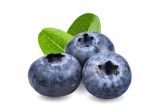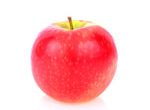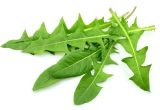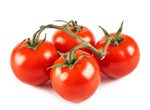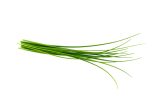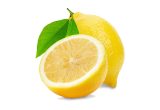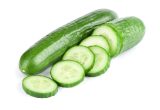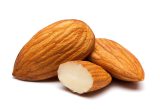Thyme

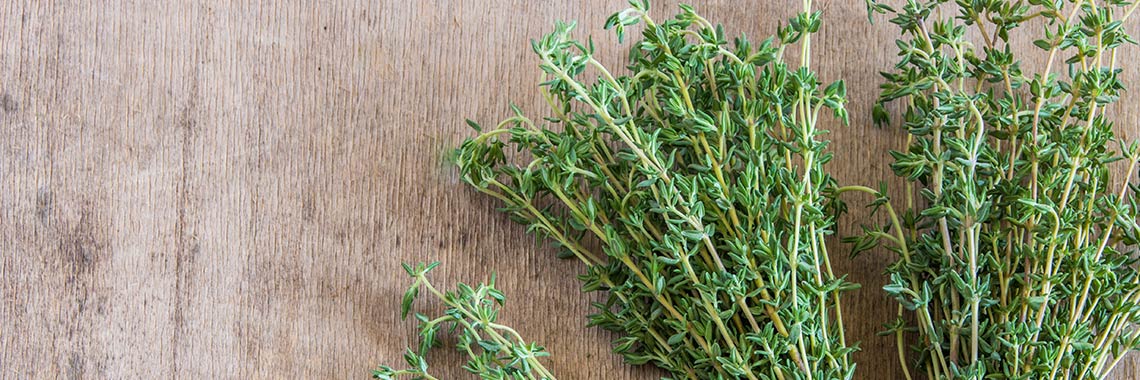
Description
- Thyme (Thumus vulgaris) belongs to the Lamiaceae family.
- Thyme is a herb used as a flavouring in food (de Oliveira, 2014) for its specific taste (Ahmad, 2014).
- The use of thyme dates back to the Roman era (Ahmad, 2014).
- There are approximately 150 species of thyme, abundantly found in Asia, Africa and North America (Hossain, 2013).
PHYSICAL AND ORGANOLEPTIC CHARACTERISTICS
- Thyme is a small shrub about 25 cm high. Its stem and branches are quadrangular in shape. The leaves are about 6 to 12 mm long. They are oval in shape, thick, smooth, dotted with numerous oil glands, paler and pubescent below (Hossain, 2013).
- Thyme flowers from June to July (Hossain, 2013).
- A series of volatile compounds have been identified: thymol, ϒ-terpinene, carvacrol, p-cymene, β-pinene, α-thujene, ocimene, gemacrene-D, α-cubebene, α-phellandrene, β-myrcene, O-cymene and β-caryophyllene (Rabiei, 2018; Mahdavi, 2020). Thymol and carvacrol are the main monoterpenes. Thymol is thought to be responsible for the pleasant smell of thyme (Stefanis, 2019).
- Chlorophyll a and b forms have been identified in the stem and leaves of thyme, giving it its green colour (Tzima, 2020).
COMPOSITION CHARACTERISTICS (excluding macronutrients, vitamins and minerals)
- Thyme leaves contain flavonoids, saponins and steroids among others (Hossain, 2013).
- In addition, the presence of alkaloids and coumarins has been demonstrated (Zairi, 2018).
- 25 phenolic compounds have been identified in thyme, most of which are flavonoids, hydroxycinnamic acid derivatives, hydroxybenzoic acid derivatives and phenolic diterpenes. The leaves contain caffeic acid, rosmarinic acid, carnosol, luteolin, apigenin and apigenin-7-oelucoside. The stem is richer in caffeic acid and rosmarinic acid (Tzima, 2020). The leaves are reported to contain, in addition to gallic acid, rutin and epicatechin (Zairi, 2018).
- The phenolic compounds in thyme give it antioxidant activity (Tzima, 2020).
- According to a study conducted on 33 people, the phenolic compounds contained in thyme have a beneficial effect on cholesterol levels and therefore on cardiovascular diseases, by regulating the expression of the main cholesterol regulators (HDL capacity to reduce cholesterol) (Farràs, 2019).
- Quinic acid, an organic acid, was also quantified in thyme (Heidari, 2018; Tzima, 2020). Other organic acids reported are malic acid, succinic acid, citric acid and lactic acid (Ashrafi, 2018).
- Thymol and carvacrol are thought to confer the antimicrobial and antiseptic activity of thyme (Nateqi, 2018; Wiese, 2018; Stefanis, 2019).
- A recent study has highlighted the presence of an insoluble polysaccharide in thyme leaves. This has antioxidant capacity due to the phenolic acids bound to it (Banerjee, 2019).
- Quinic acid, carvacrol, indole, thymol and 2-methoxy-4-methylphenol identified in thyme leaves are all believed to exhibit anticancer effects (Heidari, 2018).
FRESH
The following values are approximate and depend on variety, season, ripeness, cultivation conditions, etc. Fresh thyme provides an average of 107 calories (kcal) per 100 g, i.e. 446 kJ. For a 5 g portion, thyme contains 5.35 calories (kcal), i.e. 22.30 kJ.
COMPOSITION TABLES
For each nutrient, the tables provide information on the content, minimum and maximum values for 100 g of fresh thyme, while the percentage of the Dietary Reference Values (DRVs) is calculated for a 5 g portion.
MACRONUTRIENTS
| Constituent (g) |
Average content
per 100g |
Min-Max per 100g |
Average content
per 5g |
DRV% * |
|---|---|---|---|---|
| Water | 65,1 | - | 3,26 | - |
| Fibers | 14 | - | 0,70 | - |
| Carbohydrates | 10,50 | - | 0,53 | 0,20 |
| Sugars | - | - | - | - |
| Lipids | 1,68 | - | 0,08 | 0,12 |
| Saturated fat | 0,47 | - | 0,02 | 0,12 |
| Protein | 5,56 | - | 0,28 | 0,56 |
| Constituent (g) | Amount | Min-Max | DRV% |
|---|---|---|---|
| Water | Ciqual 2020 | - | - |
| Fibers | Ciqual 2020 | - | - |
| Carbohydrates | Ciqual 2020 | - | Règlement (UE) N°1169/2011 du parlement Européen, et du conseil du 25 octobre 2011 |
| Sugars | Ciqual 2020 | - | Règlement (UE) N°1169/2011 du parlement Européen, et du conseil du 25 octobre 2011 |
| Lipids | Ciqual 2020 | - | Règlement (UE) N°1169/2011 du parlement Européen, et du conseil du 25 octobre 2011 |
| Saturated fat | Ciqual 2020 | - | Règlement (UE) N°1169/2011 du parlement Européen, et du conseil du 25 octobre 2011 |
| Protein | Ciqual 2020 | - | Règlement (UE) N°1169/2011 du parlement Européen, et du conseil du 25 octobre 2011 |
Zoom on carbohydrates
- Its carbohydrate content is 0.53 g for a 5 g portion, i.e. 10.50 g of carbohydrates per 100 g. This is higher than the average amount found in herbs (7.85 g per 100 g).
Zoom on fibres
- For one serving of fresh thyme (5 g), the amount of fibre is 0.70 g.
Zoom on proteins
- For a 5 g portion, thyme contains 0.28 g of protein.
- This amount corresponds to 5.56 g per 100 g, which is higher than the average quantity found in herbs (4.22 g per 100 g).
Zoom on lipids
- Thyme contains 0.08 g of fat in a 5 g serving.
- The amount of fat present in 100 g of thyme (1.68 g) is higher than the average quantity found in herbs (1.18 g per 100 g).
- Thyme is low in fat* as it contains no more than 3 g per 100 g.
*Regulation (EC) No 1924/2006 of the European Parliament and of the Council of 20 December 2006 on nutrition and health claims made on foods.
MINERALS AND TRACE ELEMENTS
| Constituent |
Average content
per 100g |
Min-Max per 100g |
Average content
per 5g |
DRV% * |
|---|---|---|---|---|
| Calcium (mg) | 405 | - | 20,25 | 2,53 |
| Chloride (mg) | - | - | - | - |
| Copper (mg) | 0,56 | - | 0,03 | 2,80 |
| Iron (mg) | 17,50 | - | 0,88 | 6,25 |
| Iodine (µg) | - | - | - | - |
| Magnesium (mg) | 160 | - | 8 | 2,13 |
| Manganese (mg) | 1,72 | - | 0,09 | 4,30 |
| Phosphorus (mg) | 106 | - | 5,30 | 0,76 |
| Potassium (mg) | 609 | - | 30,45 | 1,52 |
| Selenium (µg) | - | - | - | - |
| Sodium (mg) | 9 | - | 0,45 | - |
| Zinc (mg) | 1,81 | - | 0,09 | 0,91 |
| Constituent | Amount | Min-Max | DRV% |
|---|---|---|---|
| Calcium (mg) | Ciqual 2020 | - | Règlement (UE) N°1169/2011 du parlement Européen, et du conseil du 25 octobre 2011 |
| Chloride (mg) | Ciqual 2020 | - | Règlement (UE) N°1169/2011 du parlement Européen, et du conseil du 25 octobre 2011 |
| Copper (mg) | Ciqual 2020 | - | Règlement (UE) N°1169/2011 du parlement Européen, et du conseil du 25 octobre 2011 |
| Iron (mg) | Ciqual 2020 | - | Règlement (UE) N°1169/2011 du parlement Européen, et du conseil du 25 octobre 2011 |
| Iodine (µg) | Ciqual 2020 | - | Règlement (UE) N°1169/2011 du parlement Européen, et du conseil du 25 octobre 2011 |
| Magnesium (mg) | Ciqual 2020 | - | Règlement (UE) N°1169/2011 du parlement Européen, et du conseil du 25 octobre 2011 |
| Manganese (mg) | Ciqual 2020 | - | Règlement (UE) N°1169/2011 du parlement Européen, et du conseil du 25 octobre 2011 |
| Phosphorus (mg) | Ciqual 2020 | - | Règlement (UE) N°1169/2011 du parlement Européen, et du conseil du 25 octobre 2011 |
| Potassium (mg) | Ciqual 2020 | - | Règlement (UE) N°1169/2011 du parlement Européen, et du conseil du 25 octobre 2011 |
| Selenium (µg) | Ciqual 2020 | - | Règlement (UE) N°1169/2011 du parlement Européen, et du conseil du 25 octobre 2011 |
| Sodium (mg) | Ciqual 2020 | - | - |
| Zinc (mg) | Ciqual 2020 | - | Règlement (UE) N°1169/2011 du parlement Européen, et du conseil du 25 octobre 2011 |
Zoom on minerals and trace elements
- Iron is the most represented mineral in thyme, with an equivalent of 6.25% of DRVs, i.e. 0.88 mg for a 5 g portion.
- The other minerals and trace elements are present in smaller quantities in thyme since they cover less than 5% of DRVs for a 5 g portion.
VITAMINS
| Constituent |
Average content
per 100g |
Min-Max per 100g |
Average content
per 5g |
DRV% * |
|---|---|---|---|---|
| Provitamin A Beta-carotene (µg) | 2 850 | - | 142,50 | - |
| Vitamin A equivalent (µg) | 475 | - | 23,75 | 2,97 |
| Vitamin B1 (mg) | 0,048 | - | 0 | 0,22 |
| Vitamin B2 (mg) | 0,47 | - | 0,02 | 1,68 |
| Vitamin B3 (mg) | 1,82 | - | 0,09 | 0,57 |
| Vitamin B5 (mg) | 0,41 | - | 0,02 | 0,34 |
| Vitamin B6 (mg) | 0,35 | - | 0,02 | 1,25 |
| Vitamin B9 (µg) | 45 | - | 2,25 | 1,13 |
| Vitamin C (mg) | 160 | - | 8 | 10 |
| Vitamin E (mg) | 1,70 | - | 0,09 | 0,71 |
| Vitamin K1 (µg) | - | - | - | - |
| Constituent | Amount | Min-Max | DRV% |
|---|---|---|---|
| Provitamin A Beta-carotene (µg) | Ciqual 2020 | - | - |
| Vitamin A equivalent (µg) | Calcul à partir de la valeur Provitamine A Béta-carotène* | - | Règlement (UE) N°1169/2011 du parlement Européen, et du conseil du 25 octobre 2011 |
| Vitamin B1 (mg) | Ciqual 2020 | - | Règlement (UE) N°1169/2011 du parlement Européen, et du conseil du 25 octobre 2011 |
| Vitamin B2 (mg) | Ciqual 2020 | - | Règlement (UE) N°1169/2011 du parlement Européen, et du conseil du 25 octobre 2011 |
| Vitamin B3 (mg) | Ciqual 2020 | - | Règlement (UE) N°1169/2011 du parlement Européen, et du conseil du 25 octobre 2011 |
| Vitamin B5 (mg) | Ciqual 2020 | - | Règlement (UE) N°1169/2011 du parlement Européen, et du conseil du 25 octobre 2011 |
| Vitamin B6 (mg) | Ciqual 2020 | - | Règlement (UE) N°1169/2011 du parlement Européen, et du conseil du 25 octobre 2011 |
| Vitamin B9 (µg) | Ciqual 2020 | - | Règlement (UE) N°1169/2011 du parlement Européen, et du conseil du 25 octobre 2011 |
| Vitamin C (mg) | Ciqual 2020 | - | Règlement (UE) N°1169/2011 du parlement Européen, et du conseil du 25 octobre 2011 |
| Vitamin E (mg) | Ciqual 2020 | - | Règlement (UE) N°1169/2011 du parlement Européen, et du conseil du 25 octobre 2011 |
| Vitamin K1 (µg) | Ciqual 2020 | - | Règlement (UE) N°1169/2011 du parlement Européen, et du conseil du 25 octobre 2011 |
Zoom on vitamins
- Thyme contains a significant amount of vitamin C. It provides the equivalent of 10% of DRVs, i.e. 8 mg for a 5 g portion.
- The other vitamins are present in smaller quantities, since they cover less than 3% of DRVs for a 5 g portion.
*Calculation made: Beta Carotene / 6 + retinol
POLYPHENOLS
| Constituent (mg) |
Average content
per 100mg |
Min-Max per 100mg |
Average content
per 5mg |
|---|---|---|---|
| Flavonoids (mg) | 60,30 | 60,30 - 60,30 | 3,02 |
| of which Flavones (mg) | 60,30 | 60,30 - 60,30 | 3,02 |
| Phenolic Acids (mg) | 103,50 | 103,50 - 103,50 | 5,18 |
| of which Hydroxycinnamic acids (mg) | 103,50 | 103,50 - 103,50 | 5,18 |
| Total polyphenols | 163,8 | 163,80 - 163,80 | 8,19 |
| Constituent (mg) | Amount | Min-Max |
|---|---|---|
| Flavonoids | Phénol-Explorer, version 3.6. Méthode utilisée : Chromatographie | - |
| of which Flavones | Phénol-Explorer, version 3.6. Méthode utilisée : Chromatographie | - |
| Phenolic Acids | Phénol-Explorer, version 3.6. Méthode utilisée : Chromatographie | - |
| of which Hydroxycinnamic acids | Phénol-Explorer, version 3.6. Méthode utilisée : Chromatographie | - |
| Total polyphenols | Phénol-Explorer, version 3.6. Méthode utilisée : Chromatographie | - |
Zoom on polyphenols
- Polyphenols are substances with an antioxidant effect.
- Hydroxycinnamic acids, a subgroup of phenolic acids, are predominantly present in fresh thyme composites, representing 63.19% of the total polyphenols identified.
- Flavones, a subgroup of flavonoids, represent 36.81% of the total polyphenols present in fresh thyme.
Nutrition and health claims
According to the definitions of nutrition claims as presented in Regulation (EC) No 1924/2006 on nutrition and health claims, and in view of the composition of fresh thyme, the following claims may be used:
NUTRITION CLAIMS OF FRESH THYME
- Low in energy (100 g of thyme provide less than 40 kcal)
- High in fibre (100 g of thyme provide more than 6 g of fibre)
References
- Agence nationale de sécurité sanitaire de l’alimentation, de l’environnement et du travail. Table de composition nutritionnelle des aliments Ciqual 2020. Consultée le 14/09/2020 depuis le site internet Ciqual https://ciqual.anses.fr/
- Ahmad A, van Vuuren S, Viljoen A. Unravelling the complex antimicrobial interactions of essential oils–the case of Thymus vulgaris (thyme). Molecules. 2014;19(3):2896-910.
- Ashrafi M, Azimi-Moqadam MR, Moradi P, MohseniFard E, Shekari F, Kompany-Zareh M. Effect of drought stress on metabolite adjustments in drought tolerant and sensitive thyme. Plant Physiol Biochem. 2018;132:391-9
- Banerjee P, Mukherjee S, Bera K, Ghosh K, Ali I, Khawas S, Ray B, Ray S. Polysaccharides from Thymus vulgaris leaf: Structural features, antioxidant activity and interaction with bovine serum albumin. Int J Biol Macromol. 2019;125:580-7.
- Farràs M, Arranz S, Carrión S, Subirana I, Muñoz-Aguayo D, Blanchart G, Kool M, Solà R, Motilva MJ, Escolà-Gil JC, Rubió L, Fernández-Castillejo S, Pedret A, Estruch R, Covas MI, Fitó M, Hernáez Á, Castañer O. A Functional Virgin Olive Oil Enriched with Olive Oil and Thyme Phenolic Compounds Improves the Expression of Cholesterol Efflux-Related Genes: A Randomized, Crossover, Controlled Trial. Nutrients. 2019;11(8). pii: E1732.
- Heidari Z, Salehzadeh A, Sadat Shandiz SA, Tajdoost S. Anti-cancer and anti-oxidant properties of ethanolic leaf extract of Thymus vulgaris and its bio-functionalized silver nanoparticles. 3 Biotech. 2018;8(3):177.
- Hossain MA, AL-Raqmi KA, AL-Mijizy ZH, Weli AM, Al-Riyami Q. Study of total phenol, flavonoids contents and phytochemical screening of various leaves crude extracts of locally grown Thymus vulgaris. Asian Pac J Trop Biomed. 2013;3(9):705-10.
- Mahdavi A, Moradi P, Mastinu A. Variation in Terpene Profiles of Thymus vulgaris in Water Deficit Stress Response. Molecules. 2020;25(5).
- Nateqi M, Mirghazanfari SM. Determination of total phenolic content, antioxidant activity and antifungal effects of Thymus vulgaris, Trachyspermum ammi and Trigonella foenum-graecum extracts on growth of Fusarium solani. Cell Mol Biol (Noisy-le-grand). 2018;64(14):39-46.
- de Oliveira MM, Brugnera DF, Piccoli RH. Essential oils of thyme and Rosemary in the control of Listeria monocytogenes in raw beef. Braz J Microbiol. 2014;44(4):1181-8. eCollection 2013.
- Rabiei B, Bahador S, Kordrostami M. The expression of monoterpene synthase genes and their respective end products are affected by gibberellic acid in Thymus vulgaris. J Plant Physiol. 2018;230:101-8.
- Règlement (CE) N° 1924/2006 du Parlement européen et du Conseil du 20 décembre 2006 concernant les allégations nutritionnelles et de santé portant sur les denrées alimentaires.
- Règlement (UE) N°432/2012 de la Commission du 16 mai 2012 établissant une liste des allégations de santé autorisées portant sur les denrées alimentaires, autres que celles faisant référence à la réduction du risque de maladie ainsi qu’au développement et à la santé infantiles.
- Règlement (UE) n°1169/2011 du Parlement européen et du Conseil du 25 octobre 2011 concernant l’information des consommateurs sur les denrées alimentaires, modifiant les règlements (CE) n°1924/2006 et (CE) n°1925/2006 du Parlement européen et de Conseil et abrogeant la directive 87/250/CEE de la Commission, la directive 90/496/CEE du Conseil, la directive 1999/10/CE de la Commission, la directive 200/13/CE du Parlement européen et du Conseil, les directives 2002/67/CE et 2008/5/CE de la Commission et le règlement (CE) n°608/2004 de la Commission.
- Stefanis I, Hadjipavlou-Litina D, Bilia AR, Karioti A. LC-MS- and NMR-Guided Isolation of Monoterpene Dimers from Cultivated Thymus vulgaris Varico 3 Hybrid and Their Antityrosinase Activity. Planta Med. 2019;85(11-12):941-6.




